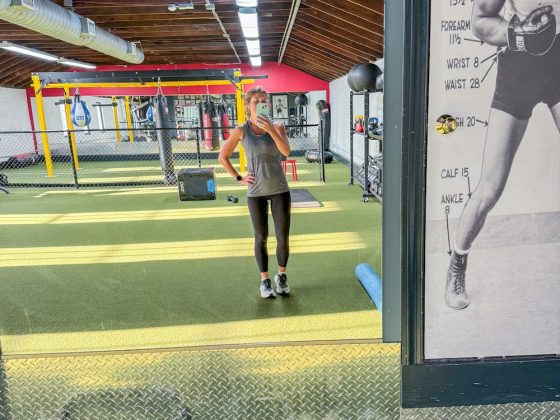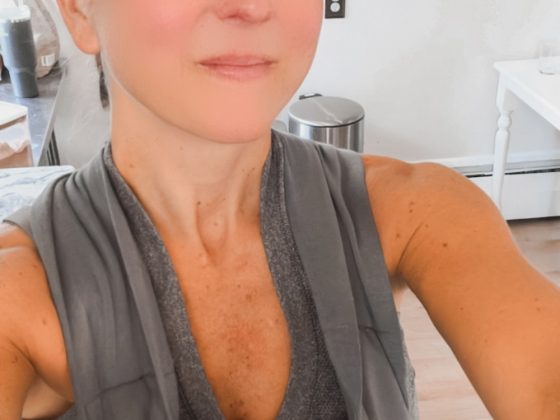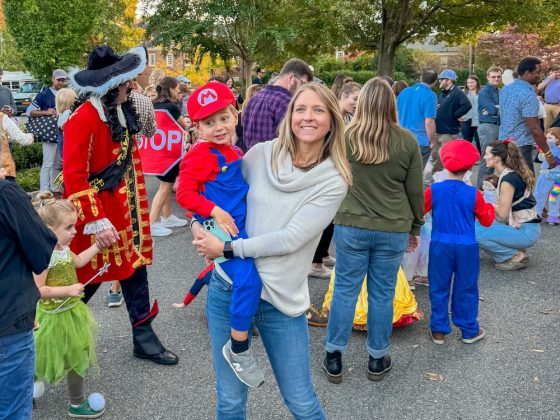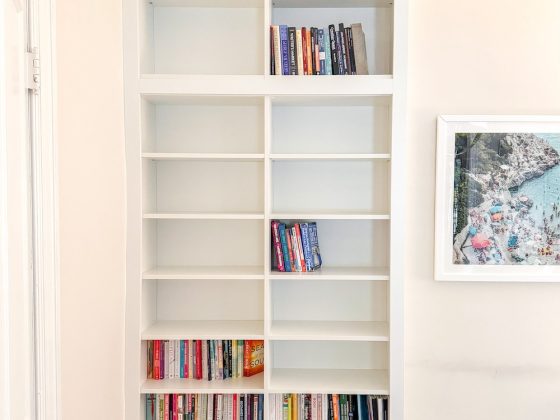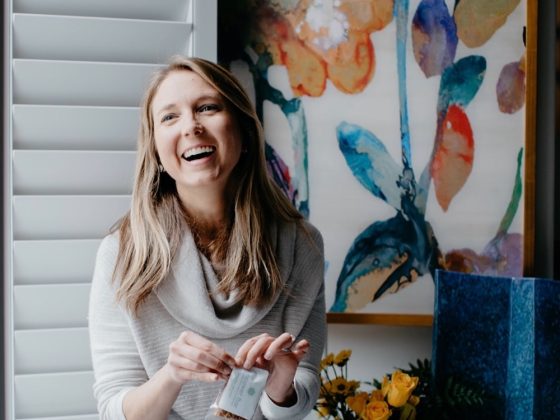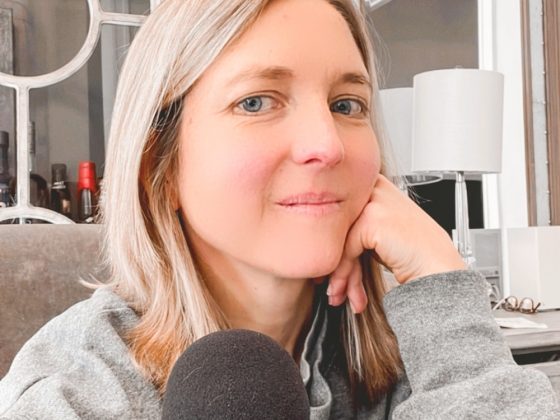I firmly believe that we are all works in progress. It feels like I have been working on myself for years; using the shiny term “inner work” that reminds me that self-improvement and the path to contentment is more of an inside job, and less dependent on external circumstances. Just when I think I have “arrived,” or I’m riding the wave of motivation from my latest self-help book, there is some other old programming I need to rewrite, or a mental habit I need to upgrade.
I just finished reading Jen Sincero’s latest book Badass Habits. If you have ever read her work, you know how motivating (and funny!) she can be. Let’s just say I feel very inspired. During a chapter when she asks you to analyze your habits and those you want to change, I had to get really real with myself. Hydrate first thing in the morning? Check. Meditate? Check. Move every day? Check. Eat healthy food? Practice self-care? Spend less time on social media? Check check check. In terms of the things I do, I am pretty proud of myself for the healthy habits I have established. If you aren’t rolling your eyes at me already, know that I wasn’t always this way! And my intentions behind practicing these behaviors weren’t always pure. Setting these decisions in stone has taken time, and if I can adopt them, so can you (should you want to). But now I am in a place with my “inner work” where my habits have less to do with the things I do, and more to do with how I am; my being. This is where the hard work comes in.
In thinking through some habits that I want to change and upgrade, here is what comes to mind:
- Playing small/self-doubt
- Not using my voice
- Being uptight/too rigid
- Complaining
- Worrying about money/staying stuck in old money stories
I will spare you the psychological deep dive into these less pretty aspects of myself, and rather go straight to the tactics I am using to change.
It all comes down to the concept of identity. The reason certain behaviors or thought patterns can be challenging to change is because we identify with them. Our ego likes to stand firm against anything that threatens our identity. It is not about what you are doing or how you are thinking, but who you are being. The trick then becomes embracing the identity of the habits you want to form.
What do you think of when you think of your being? It encompasses everything from how you stand, interact with others, think, speak to yourself in those quiet moments, to how you move through your day and show up in the world. In the past, I kept focusing on the fact that those above habits (or rather programmed aspects of myself) were a part of “who I was,” but recently something shifted. While reading Sincero’s book, I had an aha-moment: If I still had the desire to be and embody new ways of thinking, perceiving, doing or not doing, that meant I hadn’t fully embraced it yet. It hadn’t yet become a part of my identity. For example, I am an entrepreneur who loves to move every day, eat healthy food, read, and recipe create. I am also a non-smoker, dog-lover, and barre instructor. All of these things are aspects of my identity. Therefore, I have no desire to start my own business, eat healthier, or stop smoking, because it’s already who I am. If the desire is there, it has yet to be enmeshed in my identity.
To start turning this around, I implemented this formula for change that has helped rewire my brain and adopt more positive mental habits.
Pay attention to attention.
On a recent Wednesday morning, I woke to a feeling of complete dread for the day ahead. At first, I couldn’t put my finger on why I was feeling this way, so I started to mentally flip through the hours that laid before me. I literally had no calls, no meetings, no obligations outside of making sure my son was taken care of before his nanny arrived. My husband and I had even scheduled a fun date night at the pool later that afternoon. Playing with my son in the early hours and hanging out with my husband in the evening are activities I sincerely enjoy, so where was this dread coming from?
After a very insightful conversation with my life coach, we made the connection that this feeling is a habit, and one that most likely shows up in the body first (i.e. tight test, contracted belly). Then my mind tries to find reasons for this physiological state (i.e. the analyzing of my day to find reasons why I should feel this way). When I couldn’t mentally justify the feeling, that is when I woke up to the habit, and I was able to make a different choice.
I have written about my meditation practice before. I have gone through various periods in my life when it is stronger than others. Fortunately, it is a practice, and one you can always come back to. Re-establishing the habit was one of the goals I set on my 37th birthday, and currently I have meditated 46 consecutive days and counting. But even when I am not actively sitting on my meditation cushion each morning, the fact that I have had a practice in the past has created a foundation for self-awareness. Ever since my aha-moment mentioned above, I have started to pay attention to my attention, not only from the moment I wake up, but in various moments throughout my day.
I have never described myself as an optimist. In fact, I have a mental tendency towards “glass half empty.” And because this feels deeply ingrained in my identity, it is a harder habit to fix. Going back to the morning moment I just described, I also noticed the anxiety I felt when my mind was operating this way. I soon realized this was my attempt to analyze and control my external reality – an old habit from childhood that no longer served me, as the conditions back then are no longer my reality now. It played into the habit I was trying to change (being uptight, too rigid). My higher self – the identity I wanted to step more into – is more curious, spontaneous, go-with-the-flow. I no longer wanted to meet the moments of my day with this old mindset. As my day unfolds, I continue to pay attention to my attention, and if my mindset doesn’t match that of this *new* identity I’m trying to embrace, I take a deep breath, soften, say one of my mantras (see below), drop back into the neutral present moment, and choose a more positive perception.
Mantras.
Mantras are a powerful tool when it comes to tapping into the power of belief. It’s almost like a “fake it till you make it” for your brain. Something I have started to tell myself (especially as I am paying attention to my attention) is I am someone who… For example, as I was noticing my mind go to a place of anxiety and dread before I even started my day, I realized that instead, I wanted to be someone who was excited for the day ahead. So I started with that thought: I am someone who is excited to start the day. Not only did I immediately feel myself relax and soften into the moment, but I felt much more motivated to get out of bed! Additionally, it sets the law of attraction in motion in a more positive direction, allowing opportunities and experiences of excited (not dread) to be attracted to me. I also applied a mantra to the above mental habits I want to change. I re-wrote the list both in first person and the affirmative:
- I shine my brightest light confidently.
- I speak my truth.
- I flow in life’s unfolding.
- I see and perceive the positive side of things (or at least neutrality)
- Money flows to me easily, effortlessly, and consistently.
When I repeat my mantras, I am convincing my brain that I am someone who already thinks and perceives this way. The more I say them, the more these mindsets become my new habitual way of thinking and perceiving.
Visualization and journaling.
In addition to getting back to my meditation, I have been using visualization techniques to more fully embody the energy of my higher self. Let me back up. Years ago, a friend of mine sent a “higher self” visualization by Tara Mohr. This exercise had a profound effect on me. It is a short meditation with prompts and cues to have you connect to your “inner mentor,” who is you, just years into the future. While it was technically me that I met in this meditation, “she” felt separate from me. Physically, she looked like an older version of me, but her energy felt different: cool, calm, collected, content, peaceful. These are adjectives I wouldn’t have used to describe myself in real time when I was doing the visualization (uptight, too rigid, pessimistic, remember?). It has only been recently when I have started to more fully enmesh this energy into my current state of being. Because it is me! I simply have to notice when I am in my habit, and choose to match my energy to my higher self instead. Journaling, in conjunction with my meditation practice in the morning, is another way I set this tone for the day.
Take action.
Paying attention to attention, repeating mantras, visualization and journaling are just the beginning. The real work is taking action. That is where the magic happens. Once I feel as if I made a different choice in the way I want to think, perceive, feel, I am able to take action from that energetic place, rather than the energy created by the old habitual states of being. It all comes back to I am someone who…How do I want to meet the moments in my day? How would I spend this hour? How am I going to interact with this person? How am I going to show up in this situation? The pearl necklace of these moments are all strung together by a combination of conscious choice and intentional action. At first it might take a bit more forethought, until eventually it becomes a habit.




